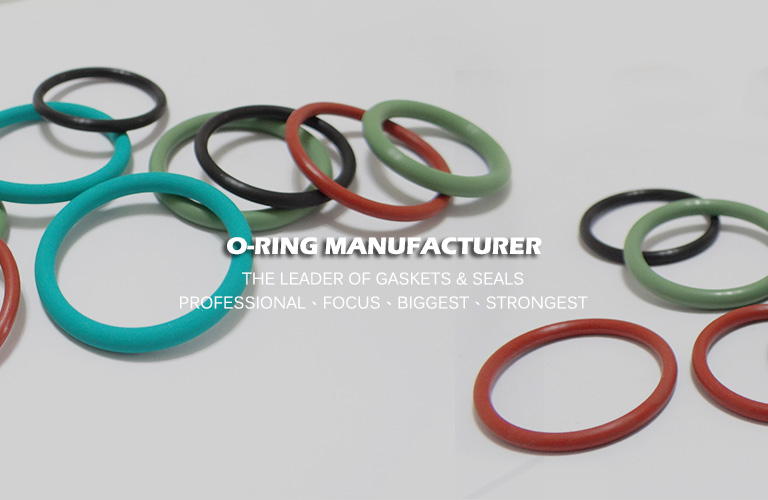NBR
Oil resistant rubber
■ NBR:
NBR is a copolymer of butadiene with acrylonitrile and was initially used to make products resistant against gasoline or petroleum. It exhibits better resistance against aromatic hydrocarbons than neophytadiene but slightly below that of polysulfides. NBR has good resistance to mineral oils and vegetable oils. However, NBR has lower resistance against oxidizing agents such as acetone, butanone, and other ketones. NBR has good resistance against acids and bases, but not to those that are considered strong oxidants. The excellent heat aging performance of NBR is the main reason why it is considered a better material than natural rubber.
■ Limitation:
It has no resistance to ozone, sunlight, natural aging and oxidizing agent.
■ Chemical properties:
ASTM D1418 Designation:NBR
ISO 1629 Designation:NBR
ASTM D2000/SAE J200 Type, Class:BF, BG, BK, CH
■ Trade name:
CHEMIGUM® HYCAR® PARACRIL® PERBUNAN® KRYNAC® NYSYSN®
■ KTseal NBR Compound:
※ Welcome orders of O-rings of international or other customized specifications
There is also information,Please swipe right
| KTseal mixture | Hardness | Color | Description |
|---|---|---|---|
| NB455 |
55 | Black | General purpose: used by internal lubricating oil. |
| NB475 | 75 | Black | General purpose: used by internal lubricating oil; low compression set; cross-linking agent of peroxide. |
| NB430 | 80 | Black | Used by internal lubricating oil; certified by FDA Food and Drug Administration (excluding cheese/fat foods). |
| NB442 | 70 | Black | Used by internal lubricating oil; low temperature resistance level. |
| NB431 | 60 | Black | Used by internal lubricating oil; gasolineresistance level. |
| NB418 | 70 | Black | Used by internal lubricating oil; ozoneresistance level. |
| NB447 | 70 | Black | Used by internal lubricating oil; high temperatureresistance level. |
| NB470 | 70 | Black | Used by internal lubricating oil; conductive level. |
| NB433 | 70 | Black | SAE J120 flame resistance level. |
| NB432 | 75 | Black | High RPM, wear resistance level. |
| NB466 | 65 | Black | Used by aerospace aircraft. |
| NBR O-Ring | |
|---|---|
| Common name or commodity | Nltrlleor Buna N |
| Chemical name | NltrlleButadi-ene |
| ASTM D1418 Nomenclature--→ | NBR |
| ASTM D2000 SAEJ200→ Type. class | BF,BG,BK,CH |
| Material properties | |
| Density (gm/cm3) | 1.00 |
| Hardness range (Shore A) | 20-90 |
| Gas permeability | B-A |
| Electrical resistance | D-C |
| Odor | B |
| Taste | C-B |
| Stain resistance | C-B |
| Stickiness | B-A |
| Mechanical properties | |
| Tensile strength (max psi) | 3,500 |
| Friction resistance | A |
| Deflection resistance | B |
| Tearing resistance | B |
| Impact resistance | C |
| Deformability | B |
| Elasticity | B |
| Rebound resilience | B |
| Stress relief | B |
| Thermal properties | |
|---|---|
| Recommended max. application temperature (℃) | 100-125 |
| Low-temperature toughness | C |
| Thermal aging resistance | B |
| Flame resistance | D |
| Resistance to following elements | |
| Weather | C-B |
| Oxygen | B |
| Ozone | C-D |
| Radiation | B |
| Water | A |
| Vapor | C-B |
| Alkali (dil/conc) | B/B |
| Acid (dil/conc) | B/B |
| Oil, gasoline, kerosene | A |
| Benzene, hydrocarbon water | B |
| Animal and vegetable oil | B |
| Oxidizing solvent | D |
| HALOGEN solvent | C-B |
| Alcohol | C-B |
| Synthetic lubricating oil | B-A |
| Hydraulic circulation: | |
| Silicate | B |
| Phosphate | D |
■ Note
- The higher the density, the more rubber material used. For example: although the unit price of neoprene is the same with natural rubber, but it's actually still very expensive.
- Sometimes the tensile strength is not important, but unchanged tensile strength during temperature rise means other mechanical properties can also remain unchanged.
- There is a wide range of temperature and friction mode for friction resistant application (e.g. scraping and colliding).
- High fracture resistance means good durability, and such property is required when physical abuse is expected.
- When physical abuse is expected to occur, tearing resistance must be accompanied by fracture resistance.
- During strong deformation, only stress-induced crystallization rubber has good durability, and low temperature curvature can also help to improve the impact resistance.
- Generally, high deformability means high fatigue resistance under deflection state.
- The less the permanent deformation, the better the structural integrity, the more it can maintain its original size.
- The better the elasticity, the less the internal heat increase in deflection or dynamic condition.
- The better the creep resistance, the longer the service life of products (especially when the product clearance must be kept constant).
- Stress relief is necessary for sealing or other frequently stressed products.
- For most of vibration buffering devices, good low temperature flexibility is necessary, and the initial swing and subsequent softness are more important.
- Oil resistance is the most important surface effect, and deterioration will not occur due to exposure in oil when the oil resistance is poor but volume is large enough.


